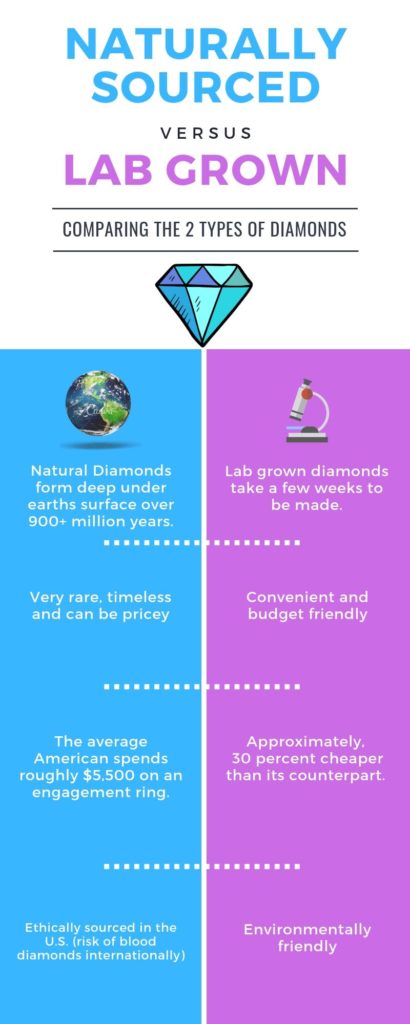How Lab Grown Diamonds can Save You Time, Stress, and Money.
Table of ContentsThe Facts About Lab Grown Diamonds RevealedFacts About Lab Grown Diamonds RevealedHow Lab Grown Diamonds can Save You Time, Stress, and Money.See This Report about Lab Grown Diamonds
As you travel closer to the Planet's core, pressure and temperature level increase, which produces the best stove for carbon to be exchanged ruby (rubies are the only gems to be made from purely one aspect). With an enormous volcanic eruption, these diamonds were transferred to the Planet's surface. It's approximated this process was rather fast (probably throughout a number of hours), which enabled the rubies to remain undamaged without melting.The short answer: carats determine the mass of stones, karats measure the purity of gold. Carat weight: 1 carat weight is equal to 0.2 grams, regarding the weight of a paperclip (following time you see a picture of Mariah Carey's 35 carat interaction ring, just imagine the worry of carrying 35 paper clips around your finger every day).

Below are a few of the crucial advantages of laboratory grown diamonds and lab grown up ruby jewelry:.
3 Simple Techniques For Lab Grown Diamonds
In other words, all-natural or earth-mined rubies are crafted over millions of years beneath the Planet's crust from pure carbon incorporated with pressure and warm. Producing rubies in a laboratory requires the same process, simply fine-tuned to take location over a much smaller sized timespan in a a lot more controlled setup.
Whereas earth-mined rubies are uncommon and finite and have a tendency to boost in rate over time, laboratory diamonds are conveniently offered., like lab-grown ruby rings, they will not be a good fit for your needs.
They could believe that the cons of lab-grown diamonds outweigh the pros. Some might suggest that, for this factor, getting a lab-made ruby also comes with its ethical factors to consider, as doing so takes earnings away from those included in the natural ruby industry that may need it most.
Typical diamonds rely on the Earth's conditions to establish their quality or lack thereof. In a lab, suppliers can directly control a ruby's top quality.
Rumored Buzz on Lab Grown Diamonds
You can conveniently locate colored, manufactured rubies on click for more info the (reasonably) low-cost side as well as specific cuts that would be pricier if you were going shopping for a mined diamond just. That rarely suggests it isn't worth securing.
natural diamonds is that the last is mined from all-natural deposits in the Earth while the former is made in a lab using regulated setups. Their high quality is mainly the very same. While the he said distinction in between lab-grown and natural ruby choices are marginal when it pertains to quality, a few of the disadvantages of lab-grown rubies include the reality that the stone will certainly diminish over time and, to some, a lack of nostalgic worth that's usually connected with mined rubies
This expense difference can be attributed to the streamlined manufacturing process and the avoidance of expenses associated with standard mining. The Controlled Environment in Which Lab Grown Diamonds Are Produced Allows for Consistent Quality.
Convenience in Style - Lab Grown Diamonds Deal Designers and Customers a Versatile Palette to Develop Distinct and Cutting-edge Jewelry Designs. the Controlled Growth Process Permits The Production of Diamonds in Numerous Forms and Sizes. Laboratory Ruby Bands are one of the most Famous Amongst Laboratory Ruby Precious Jewelry. Lab Diamonds Typically Feature An Even More Clear Supply Chain.
The smart Trick of Lab Grown Diamonds That Nobody is Discussing
Market Understanding - Regardless Of Their Identical Physical Residences, Laboratory Diamonds May Face Challenges in Market Understanding. Some Consumers Still Perceive Natural Diamonds as Having Greater Value and Eminence. The Manufacturing of Lab-Grown Diamonds Can Be Energy-Intensive, Specifically in Methods Like High Stress Heat (hpht) and Chemical Vapor Deposition (cvd).
Natural Rubies Are Developed Over Numerous Years Deep Within the Earth, Adding To Their Viewed Rarity. Lab-Grown Rubies, Despite Their Similar Feature, May Not Bring the Very Same Rarity Aspect, Influencing Their Viewed Value for Some Consumers. Effect On Diamond-Dependent Economies - the Shift In The Direction Of Laboratory Grown Diamonds Might Have Economic Implications for Countries and Communities that Depend Upon The Ruby Mining Industry.

Ans. Lab Rubies Are of Equal High Quality to Natural Diamonds in Terms of Hardness, Radiance, see here now and Clearness. the Quality of A Diamond, Whether Lab-Grown or Mined, Is Identified by Its Cut, Color, Quality, and Carat Weight Weight. Ans. Yes, Lab Diamonds Shimmer Much Like Natural Diamonds. Their Luster and Sparkle Are a Result of Their Cut and The Method Light Communicates with Their Aspects. Ans.